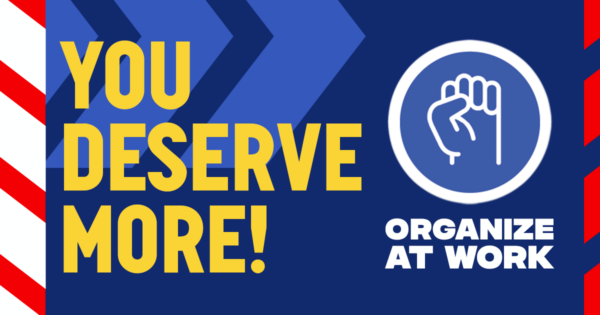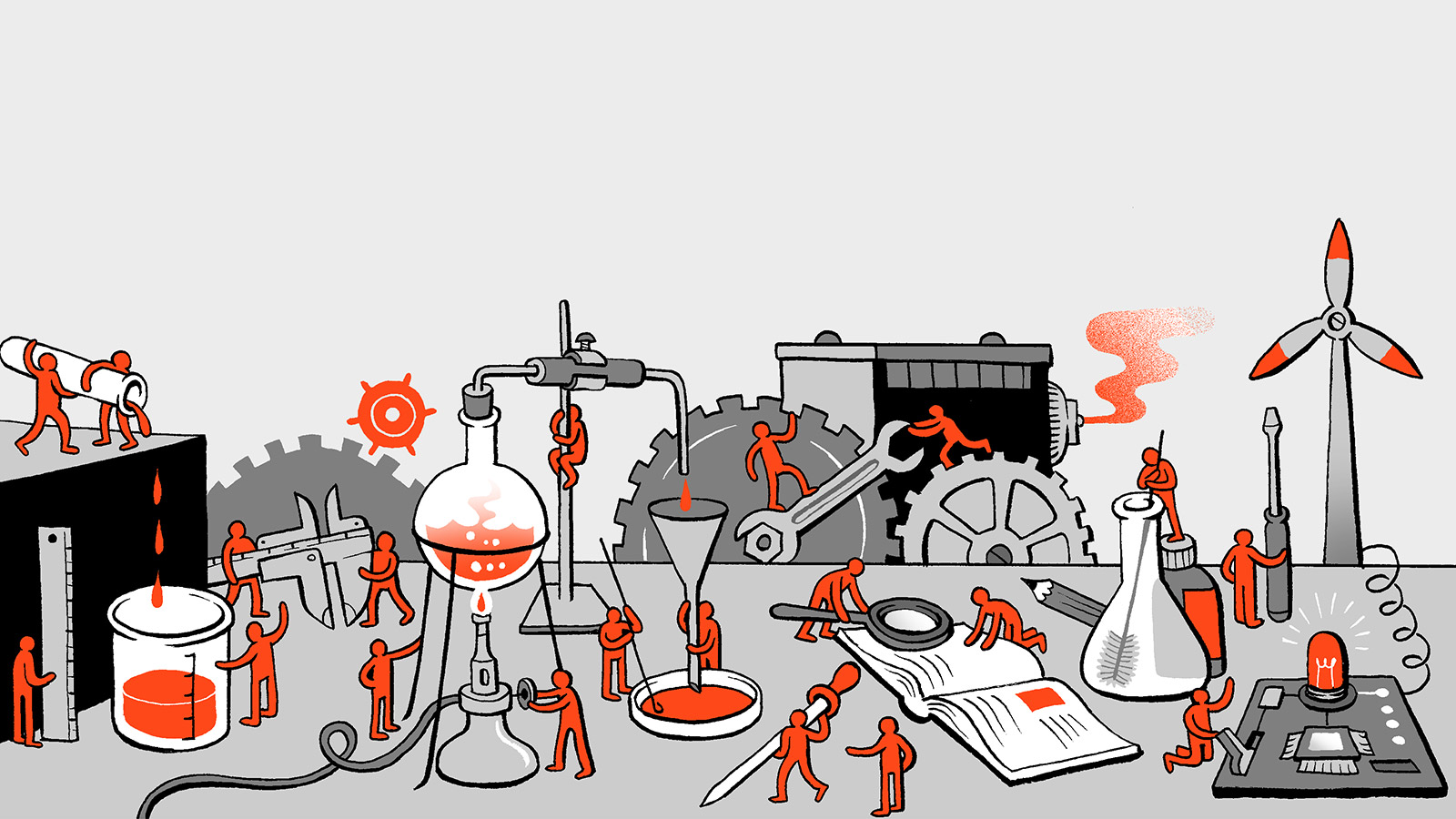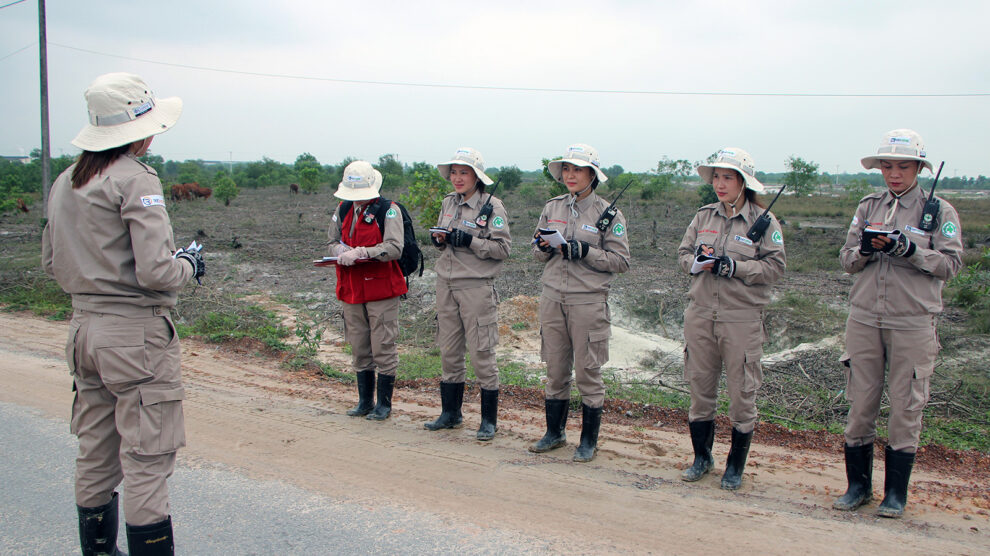Labor in Crisis: and a Swift Response from EWOC
Interview with Emergency Workplace Organizing Committee members
By Vassiki Chauhan
With the participation of: Daphna Thier, Megan Svoboda, Dawn Tefft and Wen Zhuang
Volume 26, no. 1, Gender: Beyond Binaries

Vassiki: Can you tell us a little bit about how the Emergency Workplace Organizing Committee (EWOC) came together in response to the COVID19 pandemic?
Megan: EWOC was founded in March 2020 in response to the acute need expressed by workers at the very start of the pandemic. The organization is a collaborative project between Democratic Socialists of America (DSA) and United Electrical, Radio and Machine Workers of America (UE). At the outset, most of the volunteers in EWOC used to be staffers in the 2020 Bernie Sanders presidential campaign, who were beginning to receive questions from workers about the pandemic. On the one hand, DSA members desperately wanted to act in response to the pandemic, and on the other hand, UE was witnessing an upsurge in organizing requests. EWOC responded by getting a group of volunteers with organizing experience together, and simply releasing a form online that would connect workers to volunteers. At the time, the needs expressed by workers had the urgency of life and death. Their demands ranged from winning hazard pay, receiving personal protective equipment and even shutting down the workplace. Over time, the needs that have been expressed by workers who reach out to EWOC have changed, but the requests for organizing the workplace kept coming. Eventually, people simply started stating that they wanted unions. Currently, this is the main demand that workers come to EWOC with. EWOC is now composed of over 200 active volunteers and has supported hundreds of workers in organizing their workplaces.
Wen: COVID put a lot of the rampant inequality and austere workplace conditions in the limelight. Not having mask mandates, strict COVID policies, proper ventilation, adequate sick days and health benefits were no longer issues workers could just put their heads down and work through, but a matter of life and death. Workers, in many ways, had no choice but to do something about it or lose their jobs. Initially, EWOC didn’t intend to serve a community of workers that wanted to unionize, just workers who were fed up, needed to rise up to change the situations they were in, and had no idea what the right, safe, or strategic way to do that is. This happened at the same time that Bernie dropped out of the presidential race and suddenly you had thousands of politically activated and home-bound people eager to do something more, continue the movement and Bernie’s legacy in some form.
Vassiki: We were particularly excited about featuring EWOC’s work for an issue themed on gender, because a lot of organizing that EWOC supported has happened within the realm of social reproduction: nurses, educators and workers in the service industry immediately come to mind. How is it that EWOC’s model of organizing has worked so well for these, often formerly unorganized, industries?
Daphna: The motivation to intervene in these workplaces does not just come from the subjective organizing model that EWOC uses, but reflects the objective reality that a lot of care work, a lot of women’s work in this country is grossly underpaid. Workers in these spaces are aware and in communication about their low wages, and these are not industries that are actively sought out by unions. EWOC acts as a bridge here, because we see workers engaging in dialogue with each other as a strength. Talking to coworkers empowers people, and goes against the social and professional mores of toxic, male-dominated work environments, where workers become isolated. Currently, we are finding ways to support workplaces that don’t already have a connection with EWOC and other partner organizations, workplaces that are led by women of color and engaged in care work. As a particular example, we have a lot of folks reaching out to us from non-governmental organizations, where workers are already progressive or left-leaning. These individuals know that they are performing care work, and they are pretty much expected to act as paid volunteers. They realize that they are being asked to accept suboptimal working conditions because they care for and value the work that they do. This is why EWOC got involved in supporting early childhood educators early on. Teachers had spent a lot of time feeling expendable, confronted with a very low wage system with minimal increases in payment over time. In the pandemic, institutions they worked in tried to take away sick leave, which encouraged workers to reach outside of their silos and discuss their shared reality.
Megan: A lot of the industries you mentioned were considered not organizable because the standard union organizing models cannot be readily applied to them, but these workplaces were hit particularly hard by the pandemic. Often, established unions don’t have the infrastructure to support these workers, because they rely on and prioritize workers who can pay dues. So a lot of these workers were stuck. EWOC’s organizing, in contrast, is based on the belief that you can organize anyone anywhere. We were able to show up in times of need for industries that were left behind.
Wen: At some point in the labor movement, established unions decided they wouldn’t try to tackle these large corporations, because the specific challenges they faced would make it too much work, for too long, without significant promised return. It’s caused these industries to be run rather autonomously from workplace to workplace, sometimes even within chains; and reinforced the type of toxic individualism that pits workers against each other; and rendered the mass working class powerless. EWOC’s model of organizing doesn’t just fundamentally believe in the worker-to-worker model of organizing but it necessitates it. Since our capacity is made up of a large national network of volunteers who vary in skill level and experience, it rids the organizing space of the types of hierarchies and service-culture that exists within established unions. This is especially good for industries where turnover is frequent, and the workforce is predominantly younger people moving through more transient professional pursuits. The other, more simple answer, is that there is simply no established union doing what EWOC offers, which is offering clear, direct, easily navigable ways to get help when you’re experiencing something at work that you feel you shouldn’t be. Workers who are often ignored by established unions – service workers, small workplaces, campaigns that haven’t garnered a majority support – need to get their start somewhere, and EWOC fills that space.
Dawn: High turnover, frequently changing work schedules, trouble coordinating schedules to meet at a consistent time, and lack of time or space to talk to co-workers privately at work are all problems that I’ve seen workers having to confront, in addition to all the normal problems workers face. In all situations, it’s critical that campaigns be tailored to workers’ conditions. But the more problems there are in a campaign, the more critical it becomes that campaigns are tailored to workers’ conditions. If a union were to support these workers from the start, that union might be so convinced of the approach it has taken in the past that they would try to get workers to adopt a generic organizing plan generated by union staff rather than one created by workers with the support of union staff. This would prevent the workers from taking ownership of their own planning to produce a robustly democratic campaign that springs from and is reflective of the workers’ own conditions.
Vassiki: Can you share any recent examples of campaigns within the sort of workplaces we just discussed?
Wen: We have more recently helped several Trader Joe’s campaigns organize and join Trader Joe’s United. Because Trader Joe’s United is still a small, under-resourced, independent union, the success of these stores still required a deep engagement with EWOC volunteers to get them on a path to success. We were able to provide on-the-ground support for stores that were not easily accessible by the TJU existing committee (since our volunteer network is nation-wide) and run in-person trainings, do 1:1 meetings with OC members, plan rallies and organize worker and community participation and media turnout. We worked closely with TJU’s existing leadership committee to guide workers along the philosophies and strategies that the independent union wanted to uphold, and multiplied their capacity.
Dawn: I’ve supported many higher ed campaigns through EWOC, a couple of examples of which I’ll share here. One such campaign was the campaign by grad workers at Ohio State University (OSU) through which they won $4,000 raises over two years. Another was the campaign by grad workers, who worked in coalition with faculty and undergrads, to successfully prevent the layoffs of 400 workers at Marquette University. Grad workers have high turnover, because every year about a third of the workers graduate, move on, or don’t receive a graduate assistantship for one or both semesters. So it’s important to help them quickly build a structure and get things moving. But it still has to be a solid structure that can weather changes and significant turnover. From my perspective, educating workers and drawing on their own vast knowledge is how to do this. I like to implement training early on—say in democratic principles of organizing, one-on-ones, and escalating actions—then facilitate a planning session where the organizing committee (OC) plans a campaign from start to finish. Once they have a plan, which includes various steps, they can proceed to take those steps. They then check in regularly about how implementing the plan is going, and how conversations with their co-workers are going, adjusting things as needed.
In the case of the workers at Marquette University, the grad workers were largely responsible for planning the actions that the coalition took, and they and their coalition partners held rallies, sit-ins, and press conferences, among other actions, and then staged a sick-out to protest the 450 planned layoffs. The grad workers were the driving force of the campaign, and the coalition just did not stop or back down.
In the case of the workers at OSU, they staged a rally and a car caravan, then later staged a “lie-in” that showcased the number of COVID cases on campus.
In both cases, after the training I provided, I facilitated a planning session in which they brainstormed the actions they thought would work under their conditions. They chose the sequence for those actions, and they devised the steps for getting from point A to point Z, with my input as necessary. And when I gave input, it was up to them to decide what to do with that input.
I’ll provide one more example. The faculty at Wilmington College, who I had supported in a campaign featuring a teach-in that resulted in their winning a pool of a few hundred thousand dollars for raises, successfully won their proposal to turn their Quaker college into a cooperative managed by a committee, which is currently comprised of faculty and staff. The cooperative is very reflective of Quaker values.
Vassiki: The EWOC trainings, which cover the basics of organizing one’s workplace, have been very popular among volunteers and organizers alike. As a very practical pedagogical tool, they appear to aid in base building by drawing a lot of new folks to EWOC. Can you tell us a little bit more about how these trainings work and what their goals are?
Daphna: The initial four-part training is open to everyone: people who want to organize (or are currently organizing) their own workplace, their coworkers, people who are just curious about labor organizing and the labor movement, people who want to support others who are organizing their workplaces by becoming EWOC volunteers. In each session, we host a plenary portion, with a seasoned EWOC organizer interviewing someone who recently organized their workplace. The EWOC organizer introduces the concepts and sprinkles questions throughout for the worker-organizer to share their concrete experiences. After the plenary session, we break out into discussion groups and use a popular education method to create discussion that both explores questions of organizing but also in a more meta way, allows people to develop skills of organizing: asking questions, active listening, sharing experiences, and collective problem solving.
Next, we invite people who are currently organizing their workplaces to move on to the next more “advanced” program, which is just a way to say that there is more time to get into the weeds of people’s campaigns, and we really lean heavily on people participating. This is done in a small cohort that meets for six weeks. Finally, we also run one-off trainings and political education events. We also offer worksite specific training to groups of 10 or more.
Wen: The goals of these training sessions are two-fold. One is to expand the popular understanding and education around organizing or teaching workers steps not only to unionize and win, but steps to recognize their own power, and build it with their coworkers in their workplace, or in whatever situation they are in that faces inequality, austere conditions, and poor treatment. Secondly, it also communicates to a wide audience that this thing we call “organizing” is something everyday people can do, but there are proper, strategic, effective ways to do it. We want to set people up for success and give them the vocabulary to understand both what’s going on in their workplace and how to change them, and most importantly, how to get a mass number of their coworkers to join them in the effort.
Vassiki: EWOC came together to respond to a very particular set of challenges that were acutely experienced by workers during the pandemic, and proceeded to transform the landscape of labor organizing in the US. As the organization continues to grow, what is on the horizon for EWOC?
Megan: We want to do more of what we are already doing, and we want to do it better. EWOC has identified a very clear lane to walk on, and offers very specific support to the many unorganized workers in this country. We are actively learning how to build a distributed structure that can support millions of unorganized workers. We have found a niche within the labor movement; we are not the only group addressing the needs we have identified, but we are a good group doing this work. We want to continue engaging with and supporting workers who want to organize but aren’t in a place to talk to a union representative. We are prepared to anticipate and meet changing needs in the light of the climate crisis. We know that workers will continue to face challenges in the years ahead, so we are constantly thinking about what’s to come.
Daphna: We aim to become a resource to millions of unorganized workers, and not just the ones who are lucky enough to know about our existence already. The reason this is important is that our goal isn’t simply to grow EWOC, but to build worker power in a country where this power has been decimated. We are building a fighting labor movement. Looking at a society that is riddled with crises, I’m sure that SftP readers would agree that major societal shifts are necessary. And we believe that one way to materialize these shifts is to engage directly with workers, who are most powerful in their workplace. We believe that workers are most powerful in the workplace both, because they’re already to some degree part of a community that shares their interests there — their coworkers. And because without their labor, the very thing that makes the economy continue, doesn’t happen. At the ballot box or in deciding where to spend money, the maximal impact individuals can make is through their personal choices. In contrast, when workers withhold their labor, they can make choices that impact the bottom line of people in power and even the entire economy. That’s why it’s so meaningful to organize unorganized workers. Imagine a world in which a majority of workers were organized. How powerful would we be? What could we achieve?

Vassiki: Science for the People recently released a collection of essays about labor organizing in higher education, titled “Organize the Lab.” Some of the pieces in the book were written by organizers actively engaged in campaigns on their campuses, and there were some historical and critical pieces about the nature of organizing in white collar industries, including higher education. As an organization, we are deeply encouraged by the radical movement that’s building around social justice unionism. What do you think about the labor movement in higher education, and how do you see EWOC fitting in to support rank-and-file workers within higher education, particularly on campuses where there aren’t any existing unions?
Wen: I think we do this in the same way we approach any campaign! I don’t think there is that much difference in approach from industry to industry – you analyze the power structures that exist in the workplace; you map out your workplace; you chart your leaders and weak spots; you organize structure tests to see the commitment and viability of your campaign; and you build power with each other through strong, structured organizing conversations. With higher education workers, this can happen on a mass scale, and offset the disadvantage of the flexibility of time grad workers have with the reality that many are coming into this work already politically activated.
Dawn: EWOC has supported many higher ed campaigns. Off the top of my head, I think I’ve supported around 10 myself. Originally, we were helping higher ed workers, who don’t have unions, organize issue campaigns around a series of a few demands. In these cases, it was typically higher ed workers who are prohibited by law from collectively bargaining or who don’t have legislation enabling them to form a union, etc. Now we’re also trying to help some of these workers figure out how to form unions regardless of the restrictions they face. This might mean helping them put together enough structure to be attractive to a parent union with a large enough political presence at the state level to help them win enabling legislation. It might mean supporting them in organizing actions, especially a potential strike, to compel the employer to voluntarily recognize them. But above all, it means listening carefully to what they say about their working conditions; supporting them in developing their own plans in response to those conditions; and making any input I or another volunteer might provide in response to what they’ve said about their conditions.
Higher ed is such a rich field for organizing. It’s been characterized by downsizing, outsourcing, and mechanisms for turning most of the workforce into contingent workers. Most academic workers in higher ed are adjuncts or graduate workers rather than tenured professors. These contingent workers receive low pay, little to no benefits, and have no job security, despite carrying some of the most massive school loan debt in the country. And of course, there are tons of staff and undergraduate workers who remain to be unionized. Even the tenured professors—who one might assume have it good—are horribly overworked and underpaid, especially in the Liberal Arts.
There is still a semblance of the “public commons” that the quad at a university is meant to be. Higher ed institutions make it sound like they still believe in the public commons, the idea that the people who work at and attend colleges and universities are meant to have a voice within their institution. This notion that there are supposed to be spaces on campus where they can come together to share ideas and news is visibly built into many higher ed institutions in the form of the quad. But the reality is that administrations are ballooning, and so are their salaries, while they try to make poorly informed decisions that would often be best left to the workers and students. Until workers and students organize, their voices don’t have the unity and power in numbers to create the changes that workers and students so direly need. EWOC has helped workers at many colleges and universities organize and will continue to do so. We’d love to see even more unions in higher ed.





